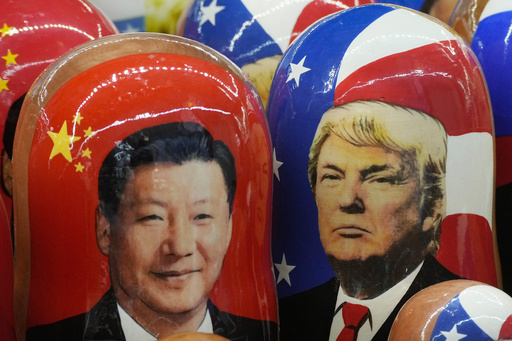
TAIPEI, Taiwan — President Donald Trump’s ongoing trade conflict with Canada, Mexico, and China is intensifying, particularly concerning the production and importation of the opiate fentanyl. The tensions also revolve around trade surpluses and the illegal immigration issues posed by migrants from various parts of the world.
How has China responded to these developments?
China has firmly stated its intention to implement “necessary countermeasures to protect its legitimate rights and interests” in light of Trump’s recent choice to impose a 10% tariff on Chinese goods, which he argues is due to China’s insufficient efforts in curtailing the production of precursor chemicals used to manufacture fentanyl. The statement from the Chinese Foreign Ministry, released on Sunday, did not specify what retaliatory actions China might take but called on the United States to rectify its missteps and to maintain the positive momentum in their counternarcotics partnership, thereby fostering a stable and sustainable relationship between the two nations.
Furthermore, China is positioning itself to challenge the U.S. actions at the World Trade Organization, arguing that these measures contravene international trading regulations. The Ministry of Public Security echoed similar sentiments, while the Commerce Ministry also released a statement reflecting their united stance.
Who does China hold responsible for the ongoing issues?
While Trump has blamed China for facilitating fentanyl production, which is allegedly then synthesized into pills in Mexico and smuggled into the U.S.—a situation correlated with approximately 70,000 overdose-related deaths annually—China contends that the U.S. should take responsibility for its own drug problems rather than imposing tariffs on other nations. According to the Chinese Foreign Ministry, “The United States requires a rational and objective approach to its fentanyl crisis… (as) China is one of the strictest nations in drug enforcement when it comes to both policy and action.”
Reports suggest that China executes a limited number of individuals each year for drug trafficking, while domestic substance abuse rates remain relatively low. The Ministry of Public Security has further asserted that there have been no reported seizures of fentanyl precursors from China since the country began enforcing stricter legal measures.
What other factors may be contributing to this diplomatic clash?
Trump’s consistent grievances about the substantial trade deficit with China, which neared $1 trillion last year, continue to fuel the discord. The increase in tariffs could lead to higher prices for Chinese imports for American consumers, placing an economic burden on households purchasing goods ranging from toys to clothing.
The prospects for the Chinese market might diminish if U.S. consumers shift towards domestic products. Additionally, China’s internal economy has not adequately rebounded from various government-sponsored stimulus programs, and ongoing infrastructure projects are contributing further to public debt levels, stalling economic growth.
This scenario is jeopardizing Chinese President Xi Jinping’s aspirations to surpass the U.S. in critical economic and political metrics, ultimately challenging his goal of asserting dominance over Taiwan and establishing Chinese leadership in the Indo-Pacific region.
Moreover, addressing illegal immigration has been a central theme of Trump’s political agenda, which has prompted tariff considerations against neighboring countries like Mexico and Canada. Even though illegal immigration from China constitutes a small portion of overall numbers, Trump has issued warnings to numerous nations, stipulating that he will hold them accountable for their citizens who unlawfully enter the United States.

